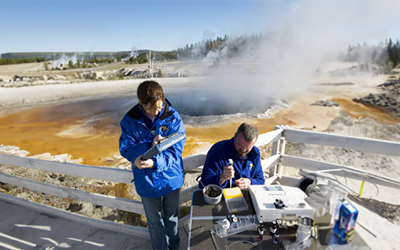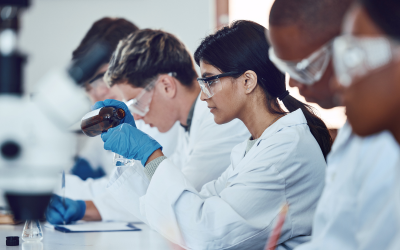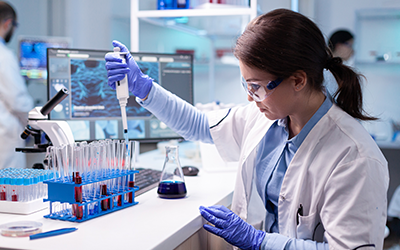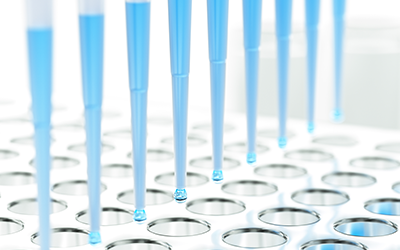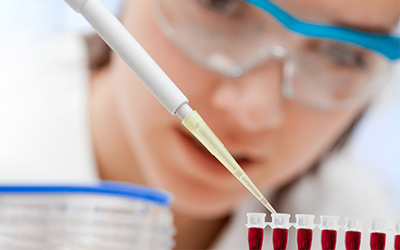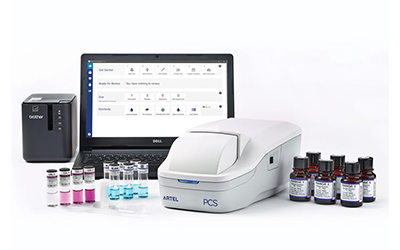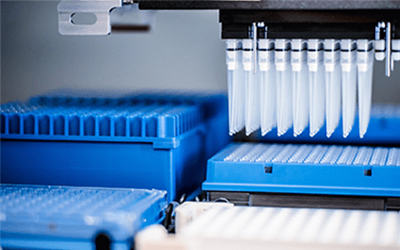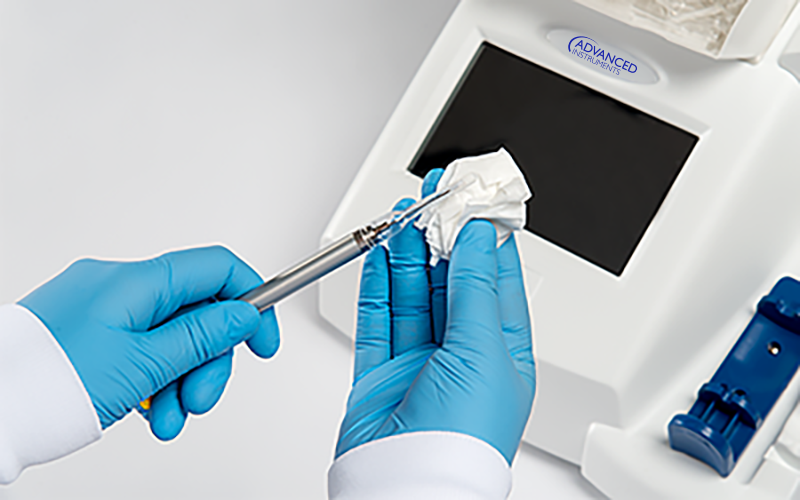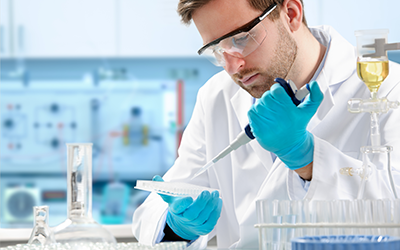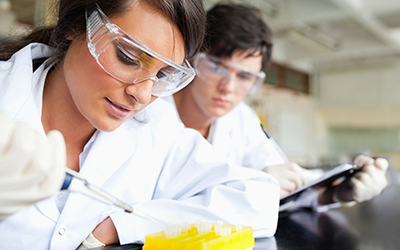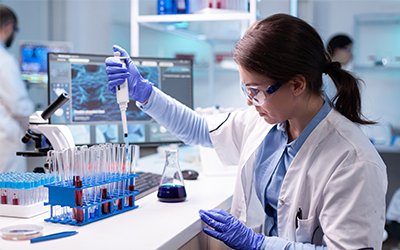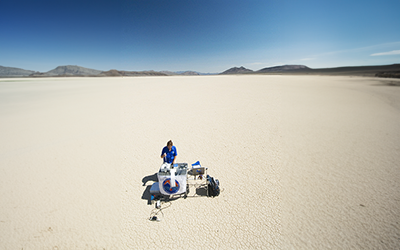The effect of fluid temperature on data integrity
After studying the effects of barometric pressure on pipette volumes atop New Hampshire’s Mount Washington—home of the world’s worst weather—the extreme pipetting expedition team embarked on its next mission: to explore the impacts of thermal variation.
The team’s destination: Yellowstone National Park, boasting the world’s largest active geyser field and more than 10,000 geysers, steam vents, and mud pots. As the team set up in the 2.2-million-acre park, hot springs bubbled and a geyser spewed steam 135 feet into the air just a short distance away. Such activity explains Yellowstone’s selection as the backdrop for the team’s three-day mission to explore how thermal disequilibrium affects pipetting data integrity.
Steaming geysers and radical geothermal features are extreme compared with the average lab technician’s daily environment. But such occurrences are emblematic of the temperature differentials that occur in the typical lab. Laboratory assays and protocols commonly require that technicians handle liquids at temperatures different than those the pipettes used to deliver them. For example, restriction enzymes used in nucleic acid work are frequently handled at ice temperature (0 °C), while higher temperatures are used for mammalian cell cultures (37 °C) and polymerase chain reaction (PCR) solutions (60 °C or higher).
The Experiment
After arriving in Yellowstone, team members surveyed the park to identify the best setting for testing. Some locations proved unsuitable when the team noted that naturally unstable environmental conditions affected pipetting accuracy and precision. For example, team members attempted pipetting in a geyser basin. But eruptions caused humidity and ambient air temperature to fluctuate wildly, leading to volume variation and the inability to isolate fluid temperature—thermal disequilibrium—as the source of error. While not the scientific purpose of this mission, the minute-by-minute environmental variations typical of Yellowstone exemplify the challenges laboratories face with sometimes unpredictable or uncharacterized changes in their own testing environment—such as those that occur when an autoclave is opened, releasing heat and moisture.
Once a stable testing location was secured, the team used the Artel PCS Pipette Calibration System to test the performance of air-displacement pipettes handling warm and cold liquids. The PCS is portable and is based on ratiometric photometry. It is unaffected by the environment and is highly accurate and precise, even at small volumes.
Each pipette was used to dispense fluid at ambient temperature; the volume was measured using the PCS. Then the PCS was used to measure the pipette’s volume delivery for warm or cold fluids. These measurements were compared with those taken at equilibrium temperature, and team members calculated the resulting error.
Over- and Under-Delivery
Team members found that pipettes over-delivered cold liquids and under-delivered warm liquids, and they recorded bias (inaccuracy) as great as 37%. Data also showed that error caused by thermal disequilibrium was most significant when smaller volume pipettes were used at their minimum volume settings. Pipettes handling small liquid volumes were also more significantly affected than pipettes handling larger liquid volumes.
For example, as seen in Figure 1, a 2 µL variable-volume pipette set to deliver 0.2 µL over-delivered cold liquid (3 °C) by 37% and under-delivered warm liquid (45 °C) by almost 23%, compared with liquid at ambient temperature (21 °C).
When set to deliver its maximum volume (2 µL), the same pipette over-delivered cold liquid (1 °C) by about 1% and under-delivered warm liquid (45 °C) by 7% (Figure 2).
As expected, error was still present —but smaller—when the team worked with larger liquid volumes. When using a 20 µL pipette to dispense its minimum volume of two µL, error was about 4% (Figure 3), as compared with the 37% error of the 2 µL pipette at its minimum volume (Figure 1).
Using the same 20 µL pipette to dispense its maximum volume produced error of only 0.6% (Figure 4), and this error was lower than the error found when using a 2 µL pipette at its maximum volume, which resulted in 0.9% error (Figure 2).
Using the 20 µL pipette to dispense its minimum volume, however, caused greater error than using it at its maximum volume (Figures 3, 4).
The Captive Air Catch
The volume differences caused by thermal disequilibrium are a result of the air displacement operation of pipettes. All air-displacement pipettes are designed with air separating the pipette piston in the body of the pipette and the liquid in the tip. This captive air acts as a springy mechanical connector to supply the force that pulls liquid into the pipette tip.
When a technician begins to pipette a fluid that is warmer than ambient temperature, the air in the pipette tip is initially cooler than the fluid. The technician then aspirates the pipette and pauses with the pipette in the liquid. The warming of the pipette tip causes the captive air to expand and push liquid from the tip. Less liquid is aspirated and subsequently dispensed, leading to a variation between the target and delivered volumes.
The opposite is true when a technician pipettes cold liquids. Here, the pipette is inserted into a cold microenvironment. The captive air volume shrinks, causing more liquid to be aspirated and subsequently dispensed.
What It Means
Thermal disequilibrium is a dynamic phenomenon. Although the team found that pipettes consistently under-delivered warm fluid and over-delivered cold fluid, the magnitude of volume variation fluctuated. This is partly because the rate at which fluids equilibrate to their microenvironment is time-dependent. The longer a pipette is in a warm environment, the warmer the captive air volume becomes, leading to more air expansion and greater impact on volume.
Therefore, the magnitude of error caused by thermal disequilibrium depends on several additional protocol-specific details, including pipetting speed, type of sample container, and volume of captive air in the pipette tip. A blanket solution does not exist. The following actions will, however, minimize the risk of volume variation:
Equilibrate fluids to the temperature of the environment and liquid handling device.
Although this is the most logical solution, it is not always practical. Many laboratory assays require that liquids be warm or cold. To the degree possible, however, labs should minimize the handling of liquids at extreme temperatures. Liquids equilibrated to room temperature will be delivered with the greatest accuracy.
Minimize pipette captive air.
The higher the volume of captive air present, the greater the source of error (Figures 1 and 3). Pipetting volumes as close as possible to the maximum volume of the liquid handling device lowers the ratio of captive air to liquid volume and reduces the error caused by thermal disequilibrium.
Use positive-displacement pipettes.
Air-displacement pipettes are most often used in today’s laboratories due to cost efficiency and ease of use. These instruments include captive air, however, which makes them more prone to environmental error. Positive-displacement pipettes, on the other hand, do not have captive air volume and are therefore less affected by thermal disequilibrium.
Minimize exposure of the pipette tip to warm or cold liquids.
The slower the pipetting speed, the longer the pipette and pipette tip are exposed to the warm or cold microenvironment. Pipetting more rapidly and minimizing the length of time the pipette tip is exposed to the microenvironment reduces the effect of thermal disequilibrium on the pipetted volume.
Develop correction factors for each lab protocol.
A technician may be able to determine a correction factor but only for a specific protocol: operator, pipette type, pipette tip, volume delivered, and so on. Although such correction factors are effective when applied with the requisite attention to detail, their development and use are extremely time-consuming.


